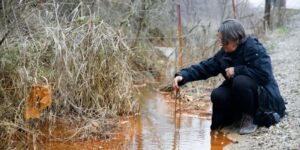
In the past two years an increasing number of earthquakes have rocked Oklahoma, leading to an increase of resident concern.
“Last year in 2014 there was 286 earthquakes that ranked 3.0 or above,” senior Jesse Schaffer said. “That’s three times more than the state of California, which is well known for their earthquake activities.”
According to NewsOK, Michael Teague, secretary of Energy and Environment, said his office will develop a website that will keep the public informed of the earthquake activity. It will be modeled after the Oklahoma Water Resources Board’s drought page, drought.ok.gov.
Howard Vogel, assistant professor of Chemistry at Oklahoma Christian University, said because of the lack of data in this area, it is hard to predict when an earthquake will hit Oklahoma.
“The thing about earthquakes is you have to wait until they happen, so it might be some time,” Vogel said.
Despite the studies on earthquakes, there is not a single definitive cause as to why earthquakes have been shaking the state this hard in the past two years.
Oklahoma had 109 earthquakes with a magnitude greater than 3.0 in 2013 and up to 562 in 2014. Some of the studies link wastewater injection wells from oil and gas development might have increased the earthquake activity.
Earlier this month several earthquakes with a magnitude of 3.0 or higher shook Oklahoma, including a quake with a 4.3 magnitude in Alfalfa County. Many locals attribute the increase in earthquakes to the increase in drilling for oil.
“They should have taken more precautions before we started drilling,” Schaffer said. “The precautions have been sent to the way side, now it’s a matter of patching up the damage that’s already been done.”
However, Vogel said the drilling is not a cause but perhaps a trigger of the earthquakes.
“What happens with earthquakes is that as the pressure builds up, it gets to a breaking point and then it slits all of the sudden,” Vogel said. “So, as a guess, maybe the fracking or the waste wells that they’re digging may be trigger the earthquakes, but they’re not the cause of the earthquakes.”
Because Oklahoma is more equipped for disasters such as tornadoes and wildfires, the state is not as well equipped for a disaster as sudden as an earthquake.
“We’re still fairly new in the earthquake department because there have not been earthquakes for a while,” Vogel said. “ There used to be some in the past, but further in the past than what we would be remembering now. We would have to basically start from scratch with our earthquake precautions.”
Preparing for an earthquake would be a difficult task for the state because of their unpredictability.
“It’s not like a hurricane where we know a week ahead of time or even a tornado where they let you know five minutes ahead of time,” Vogel said. “An earthquake is going to happen now. So the only thing that you could do would be long-term preparedness. Not like an earthquake where you could get into a storm shelter, everything would have to be earthquake resistant and that would mean basically starting over with our infrastructure.”
While the new website is still in the works, there is a current site for people to go to for earthquake information.
“Anytime we have an earthquake, my wife goes to usbs.gov and looks to see where it was located and its magnitude of depth,” Vogel said.
Vogel said people will most likely only visit the earthquake website out of curiosity, but not prevention.
“What good does it do if you’re not going to look at it before the earthquake to get prepared for it,” Vogel said.













Be First to Comment